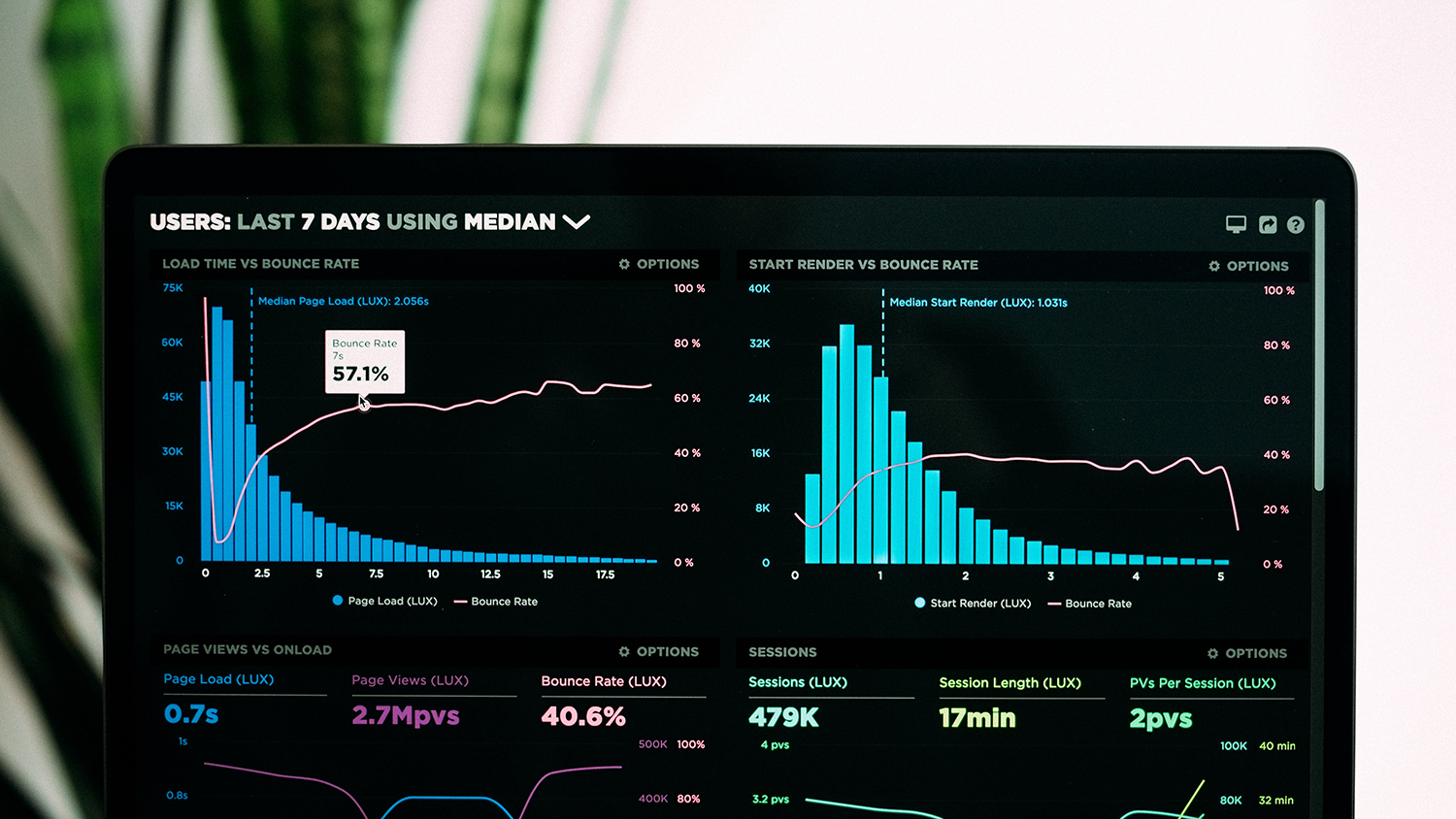Why Tracking the Right Metrics is Crucial for Startup Success
For startups, growth is the ultimate goal. However, achieving sustainable growth requires more than just a great product or service. It demands a deep understanding of the key performance indicators (KPIs) that drive business success. Startup growth metrics provide the necessary insights to inform strategic decisions, optimize operations, and drive revenue growth. By tracking the right metrics, startups can identify areas of improvement, measure progress, and make data-driven decisions to stay ahead of the competition.
Ignoring or misinterpreting growth metrics can have severe consequences for startups. Without a clear understanding of their KPIs, startups may struggle to secure funding, attract and retain talent, and ultimately, achieve long-term success. On the other hand, startups that prioritize metrics-driven decision-making are better equipped to navigate the challenges of rapid growth and scale their business effectively.
So, what makes startup growth metrics so important? For starters, they provide a common language for stakeholders to communicate and make decisions. By establishing a set of key metrics, startups can ensure everyone is working towards the same goals and objectives. Additionally, metrics help startups to identify areas of inefficiency and optimize their operations for maximum impact.
Startup growth metrics also play a critical role in securing funding and investment. Investors want to see that startups have a clear understanding of their KPIs and are using data to drive decision-making. By demonstrating a strong grasp of their metrics, startups can build trust with investors and increase their chances of securing funding.
In the world of startups, growth is not just about revenue; it’s about creating a sustainable business model that drives long-term success. By tracking the right startup growth metrics, businesses can ensure they’re on the path to achieving their goals and creating a lasting impact in their industry.
How to Choose the Right Growth Metrics for Your Startup
Selecting the right growth metrics is crucial for startups to measure success and drive business growth. With so many metrics to choose from, it can be overwhelming to determine which ones are most relevant to your business. To make the process easier, consider the following factors: business model, industry, and stage of development.
Startups with a subscription-based business model, for example, may prioritize metrics such as monthly recurring revenue (MRR) and customer lifetime value (CLV). On the other hand, startups with an advertising-based business model may focus on metrics such as cost per acquisition (CPA) and return on ad spend (ROAS).
Industry is another important factor to consider when selecting growth metrics. Startups in the e-commerce industry, for instance, may prioritize metrics such as conversion rate and average order value (AOV). In contrast, startups in the software as a service (SaaS) industry may focus on metrics such as customer acquisition cost (CAC) and retention rate.
The stage of development is also a critical factor in selecting growth metrics. Early-stage startups may prioritize metrics such as user acquisition and retention, while later-stage startups may focus on metrics such as revenue growth and customer lifetime value.
Some popular growth metrics for startups include:
- Customer acquisition cost (CAC): the cost of acquiring a new customer
- Retention rate: the percentage of customers retained over a given period
- Revenue growth rate: the rate at which revenue is growing over time
- Monthly recurring revenue (MRR): the recurring revenue generated by a startup each month
- Customer lifetime value (CLV): the total value of a customer over their lifetime
By considering these factors and selecting the right growth metrics, startups can gain a deeper understanding of their business and make data-driven decisions to drive growth and success.
Understanding User Acquisition Metrics: The Key to Scaling Your Startup
User acquisition is a critical component of startup growth, and understanding the right metrics is essential to scaling your business. In this section, we’ll delve into the key user acquisition metrics, including cost per acquisition, customer lifetime value, and return on ad spend.
Cost per acquisition (CPA) is the cost of acquiring a new customer, and it’s a crucial metric for startups to track. To calculate CPA, divide the total cost of acquiring new customers by the number of new customers acquired. For example, if you spent $1,000 on advertising and acquired 100 new customers, your CPA would be $10.
Customer lifetime value (CLV) is the total value of a customer over their lifetime, and it’s a key metric for understanding the long-term potential of your customers. To calculate CLV, multiply the average order value by the number of purchases made by a customer over their lifetime. For example, if the average order value is $100 and the average customer makes 5 purchases over their lifetime, the CLV would be $500.
Return on ad spend (ROAS) is the revenue generated by each dollar spent on advertising, and it’s a key metric for understanding the effectiveness of your advertising campaigns. To calculate ROAS, divide the revenue generated by an advertising campaign by the cost of the campaign. For example, if you spent $1,000 on an advertising campaign and generated $2,000 in revenue, your ROAS would be 200%.
By tracking these user acquisition metrics, startups can gain a deeper understanding of their customer acquisition costs, customer lifetime value, and return on ad spend. This information can be used to optimize user acquisition strategies, improve customer retention, and drive business growth.
Here are some tips for optimizing user acquisition strategies:
- Use data to inform your advertising decisions, and focus on channels that drive the highest return on ad spend.
- Optimize your landing pages and conversion funnels to improve conversion rates and reduce customer acquisition costs.
- Use customer segmentation to target high-value customers and improve customer lifetime value.
By following these tips and tracking the right user acquisition metrics, startups can drive business growth, improve customer retention, and achieve long-term success.
The Importance of Retention Metrics: Keeping Customers Engaged and Loyal
Retention metrics are a crucial aspect of startup growth metrics, as they help businesses understand how well they are retaining customers over time. Customer retention is a key driver of revenue growth, as it costs significantly less to retain existing customers than to acquire new ones.
There are several key retention metrics that startups should track, including:
- Churn rate: the percentage of customers who stop using a product or service over a given period
- Retention rate: the percentage of customers who continue to use a product or service over a given period
- Net promoter score (NPS): a measure of customer satisfaction and loyalty, calculated by asking customers how likely they are to recommend a product or service to others
By tracking these retention metrics, startups can gain a deeper understanding of their customers’ needs and preferences, and make data-driven decisions to improve customer retention. For example, if a startup notices that its churn rate is high, it may need to adjust its customer support strategy or improve the overall user experience.
Improving customer retention can have a significant impact on revenue growth and customer lifetime value. According to a study by Bain & Company, a 5% increase in customer retention can lead to a 25% increase in revenue. Additionally, a study by Gartner found that 80% of a company’s future revenue comes from just 20% of its existing customers.
Here are some tips for improving customer retention:
- Provide excellent customer support: respond promptly to customer inquiries, and offer personalized support to resolve issues quickly
- Offer loyalty programs: reward customers for their loyalty, and provide incentives for them to continue using your product or service
- Improve the user experience: gather feedback from customers, and use it to make data-driven decisions to improve the overall user experience
By prioritizing customer retention and tracking key retention metrics, startups can drive business growth, improve customer satisfaction, and increase revenue over time.
Revenue Growth Metrics: Measuring the Success of Your Startup’s Monetization Strategy
Revenue growth metrics are a crucial aspect of startup growth metrics, as they help businesses understand the success of their monetization strategy. By tracking revenue growth metrics, startups can gain insights into their revenue streams, identify areas for improvement, and make data-driven decisions to drive business growth.
There are several key revenue growth metrics that startups should track, including:
- Monthly recurring revenue (MRR): the revenue generated by a startup each month
- Annual recurring revenue (ARR): the revenue generated by a startup each year
- Revenue growth rate: the rate at which revenue is growing over time
By tracking these revenue growth metrics, startups can gain a deeper understanding of their revenue streams and make data-driven decisions to drive business growth. For example, if a startup notices that its MRR is increasing, it may be a sign that its monetization strategy is working effectively.
Here are some tips for optimizing revenue growth strategies:
- Offer tiered pricing: offer different pricing tiers to cater to different customer segments and increase revenue
- Implement upselling and cross-selling strategies: offer complementary products or services to increase average order value and revenue
- Improve customer retention: focus on retaining existing customers to reduce churn and increase revenue
By prioritizing revenue growth and tracking key revenue growth metrics, startups can drive business growth, increase revenue, and achieve long-term success.
When analyzing revenue growth metrics, it’s essential to consider the following factors:
- Seasonality: revenue growth may vary depending on the time of year or season
- Market trends: revenue growth may be influenced by market trends and changes in customer behavior
- Competitor analysis: revenue growth may be affected by competitor activity and market share
By considering these factors and tracking revenue growth metrics, startups can gain a comprehensive understanding of their revenue streams and make data-driven decisions to drive business growth.
How to Use Data Analytics Tools to Track and Measure Startup Growth Metrics
Data analytics tools are essential for tracking and measuring startup growth metrics. These tools provide insights into customer behavior, revenue growth, and other key performance indicators (KPIs) that help startups make data-driven decisions. In this section, we’ll explore popular data analytics tools and provide tips for setting them up and configuring them for optimal insights.
Google Analytics is a popular data analytics tool that provides insights into website traffic, engagement, and conversion rates. To set up Google Analytics, create an account and install the tracking code on your website. Then, configure the tool to track key metrics such as page views, bounce rate, and conversion rate.
Mixpanel is another popular data analytics tool that provides insights into user behavior and retention. To set up Mixpanel, create an account and install the tracking code on your website. Then, configure the tool to track key metrics such as user retention, funnels, and A/B testing.
ChartMogul is a data analytics tool that provides insights into revenue growth and customer lifetime value. To set up ChartMogul, create an account and connect your payment gateway. Then, configure the tool to track key metrics such as monthly recurring revenue (MRR), annual recurring revenue (ARR), and customer lifetime value (CLV).
When setting up data analytics tools, it’s essential to consider the following factors:
- Data accuracy: ensure that the data is accurate and reliable
- Data completeness: ensure that the data is complete and comprehensive
- Data relevance: ensure that the data is relevant to your business goals and objectives
By setting up and configuring data analytics tools, startups can gain insights into their growth metrics and make data-driven decisions to drive business growth. Remember to regularly review and analyze the data to ensure that you’re on track to meet your business goals and objectives.
Here are some tips for getting the most out of data analytics tools:
- Set clear goals and objectives: define what you want to achieve with your data analytics tools
- Track key metrics: identify the key metrics that are relevant to your business goals and objectives
- Regularly review and analyze the data: regularly review and analyze the data to ensure that you’re on track to meet your business goals and objectives
By following these tips and using data analytics tools effectively, startups can drive business growth, improve customer retention, and increase revenue.
Common Mistakes to Avoid When Measuring Startup Growth Metrics
Measuring startup growth metrics can be a complex and nuanced process, and there are several common mistakes that startups can make when tracking and analyzing their growth metrics. In this section, we’ll highlight some of the most common pitfalls to avoid, and provide guidance on how to overcome them.
Misinterpreting data is a common mistake that startups can make when measuring growth metrics. This can happen when startups focus too much on vanity metrics, such as website traffic or social media engagement, rather than metrics that are directly tied to revenue growth and customer acquisition. To avoid misinterpreting data, startups should focus on tracking metrics that are directly tied to their business goals and objectives.
Ignoring seasonality is another common mistake that startups can make when measuring growth metrics. Seasonality can have a significant impact on startup growth, and ignoring it can lead to inaccurate conclusions about growth trends. To avoid ignoring seasonality, startups should use data analytics tools to track and analyze their growth metrics over time, and adjust their strategies accordingly.
Failing to adjust for changes in the market or business model is another common mistake that startups can make when measuring growth metrics. Startups should regularly review and update their growth metrics to ensure that they are still relevant and accurate. This can involve adjusting for changes in the market, such as shifts in customer behavior or changes in the competitive landscape.
Here are some additional tips for avoiding common mistakes when measuring startup growth metrics:
- Use data analytics tools to track and analyze growth metrics over time
- Focus on metrics that are directly tied to revenue growth and customer acquisition
- Regularly review and update growth metrics to ensure that they are still relevant and accurate
- Adjust for changes in the market or business model
By avoiding these common mistakes, startups can ensure that they are accurately tracking and analyzing their growth metrics, and making data-driven decisions to drive business growth.
Remember, measuring startup growth metrics is an ongoing process that requires regular review and analysis. By staying focused on the right metrics, and avoiding common pitfalls, startups can drive business growth, improve customer retention, and increase revenue.
Putting it All Together: Creating a Comprehensive Growth Metrics Dashboard
Creating a comprehensive growth metrics dashboard is essential for startups to track and measure their growth metrics effectively. A well-designed dashboard provides a clear and concise overview of key performance indicators (KPIs) and metrics, enabling startups to make data-driven decisions and drive business growth.
To create a comprehensive growth metrics dashboard, startups should consider the following steps:
- Identify key metrics and KPIs: Determine the most important metrics and KPIs that align with your startup’s goals and objectives.
- Choose a dashboard tool: Select a dashboard tool that can effectively track and measure your startup’s growth metrics, such as Google Data Studio, Tableau, or Mixpanel.
- Design the dashboard: Design a dashboard that is easy to navigate and provides a clear overview of key metrics and KPIs.
- Configure the dashboard: Configure the dashboard to track and measure key metrics and KPIs, and set up alerts and notifications to ensure that you stay on top of your startup’s growth metrics.
Here are some tips for creating a comprehensive growth metrics dashboard:
- Keep it simple: Avoid cluttering the dashboard with too many metrics and KPIs. Focus on the most important ones that align with your startup’s goals and objectives.
- Make it visual: Use charts, graphs, and other visualizations to make the data easy to understand and interpret.
- Make it interactive: Allow users to interact with the dashboard by providing filters, drill-down capabilities, and other interactive features.
By creating a comprehensive growth metrics dashboard, startups can effectively track and measure their growth metrics, make data-driven decisions, and drive business growth.
A well-designed dashboard can also help startups to:
- Identify areas for improvement: By tracking key metrics and KPIs, startups can identify areas for improvement and make data-driven decisions to drive business growth.
- Optimize resources: By tracking key metrics and KPIs, startups can optimize their resources and allocate them more effectively to drive business growth.
- Enhance customer experience: By tracking key metrics and KPIs, startups can enhance the customer experience and improve customer satisfaction.
By following these tips and creating a comprehensive growth metrics dashboard, startups can drive business growth, improve customer satisfaction, and optimize their resources.






